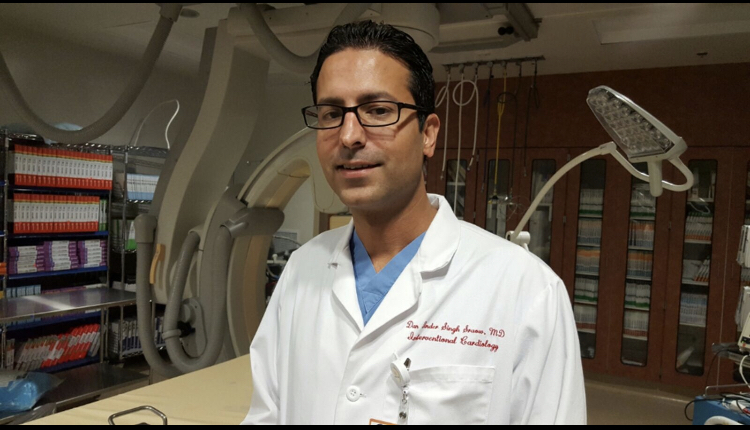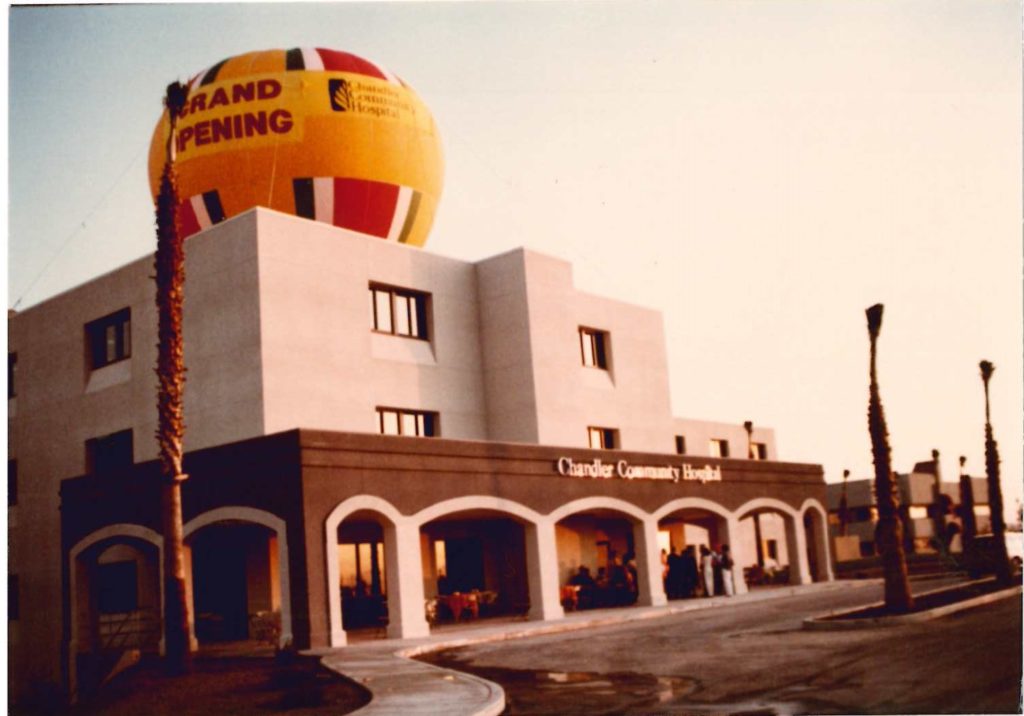
By Diana Nelson
It’s not every doctor who can say that they practice medicine in their hometown, but it’s true of Dr. Dan Sraow, a cardiologist and the Medical Director of Structural Heart at Dignity Health’s Chandler Regional Medical Center.
He grew up in Chandler and watched as the East Valley suburb transformed itself from a sleepy farm town into a high-tech, much larger city.
Sraow graduated from Chandler High School, where he was on both the wrestling and football teams.
“I then left at 18 to attend Northwestern University. I did my medical training at Cleveland Clinic, where in 2008, I was introduced to the TAVR,” Sraow told Wrangler News. He went on to work for Northwell Health in New York, where he performed a large number of Transcatheter Aortic Valve Implantation procedures. After his time in New York, Sraow returned to Chandler, where, since 2016, has performed the game-changing TAVR procedure on his patients.
TAVR is a revolutionary heart procedure that may help more Tempe and West Chandler patients who suffer from heart disease—specifically aortic stenosis—one of the most common and serious conditions to affect heart values.
Rather than enduring the significant pain and recovery time of open heart surgery, TAVR is a minimally invasive treatment option. New medical guidelines expand the field of patients who may qualify for a TAVR, say staff from Dignity Health Chandler Regional Medical Center. The Federal Drug Administration’s new protocols mean that more low-risk patients could improve their health as a result of the TAVR procedure. The incidence of aortic valve stenosis increases with age.
As the aortic valve opening narrows, the heart must work harder to pump blood to the body. Occurring in about three percent of Americans over age 75, severe aortic valve stenosis can cause fainting, chest pain, heart failure, irregular heart rhythms (arrhythmias), cardiac arrest or death. Patients with severe aortic valve stenosis generally need to undergo heart valve replacement to improve blood flow through their aortic valve.
“As to the right candidate for the TAVR procedure, I believe it’s anyone with severe aortic stenosis that is causing them symptoms,” Sraow said. “That goes from the lowest risk, such as a young person with no health problems other than a tight valve, to the extreme risk, which would be a person with many medical problems.”
Previously, the transcatheter valves were used only for patients at an intermediate or high risk for death or major complications during open-heart surgery.
In low-risk patients, open-heart surgery was the standard of care for aortic valve pre-placement.
But revised thinking, by industry experts, suggest that the TAVR should be used on more patients, since it involves a smaller incision and shorter recovery time than open-heart surgery.
Once Sraow completes a TAVR procedure, he has his patients resume a regular routine in short order.
“After the TAVR procedure, I typically have my patients in a chair in four hours and walking eight hours later. I then have them walk laps around the floor the next morning and discharge the majority of patients in less than 24 hours.
“I generally see each patient one time after the TAVR procedure; and, then they would then follow up with their cardiologist,” explained Sraow.
As to other ongoing care, the doctor recommends cardiac rehab at Chandler Regional to all his TAVR patients.
“This is a comprehensive program of monitored exercise, nutrition, education, and cardiac nurses who can answer any questions one might have. We do monitor the valve with echocardiograms at 30 days and 12 months, to assess the valve function,” said Sraow.
Before offering the TAVR to patients, hospital staff in Chandler undertook careful research and planning.
“A year before our first TAVR implant in October 2016, we visited major centers in other parts of the country and assembled a comprehensive heart team, including interventional cardiologists, cardiovascular surgeons, cardiac imaging specialists, and administrators that actually traveled to other states to learn how to create the best TAVR program,” said Sraow.

Cardiology care at Chandler Regional has grown along with the hospital, which began in 1961 with only 40 beds, 25 employees and 91 volunteers. Today, the facility includes 338-beds, more than 2,500 employees and nearly 1,000 doctors on staff, who represent all major specialties.
In 1999, Chandler Regional became part of the Dignity Health system of hospitals. Which brings us back to Sraow’s family ties in the community.
It was during the hospital’s expansion phase that Sraow’s father, Dr. Jagwinder Sraow, who is also a cardiologist, encouraged him to return to his hometown.
His brother, Dr. Paul Sraow, also returned to the Valley after receiving his medical education and is a pain management physician in Tempe and serves as the medical director at East Valley Pain Management.
“My father, who was still practicing in the East Valley, stated my hometown needed this type of program,” said Sraow. After several years of training and working in New York, he said he returned to Chandler, “to start an excellent TAVR program for the community that raised me.”
Earlier, his father was instrumental in starting the cardiovascular department at Chandler Regional, along with three other cardiologists. He also began his practice in 1984.
“When I was a kid, the hospital was basically surrounded by farm land. I could actually ride my go-cart to the hospital when I was young. Then Loop 101 and Chandler Fashion Center were built. This led to exploding population growth. With that, the hospital grew to fit the needs of a larger community.”
Even though Dr. Dan Sraow’s diverse training all across the country did direct him back to Arizona, he says he is dedicated to staying current on developments in medical technology, and evaluating new and previously unavailable therapies for the patients in his community, as well as promoting preventive measures for positive change in his patients’ lives.
In addition, to following his father’s footsteps at Chandler Regional, the two doctors continue to work together in their private practice called Sun State Cardiology, with their main office in Chandler.

